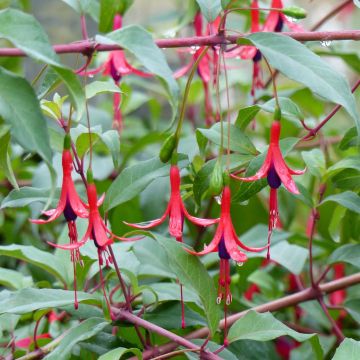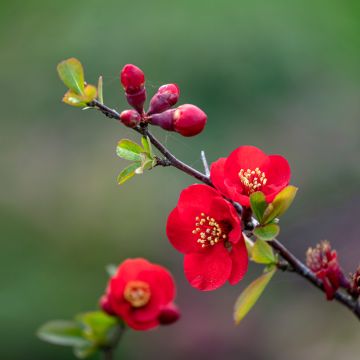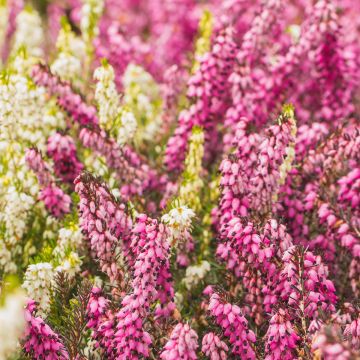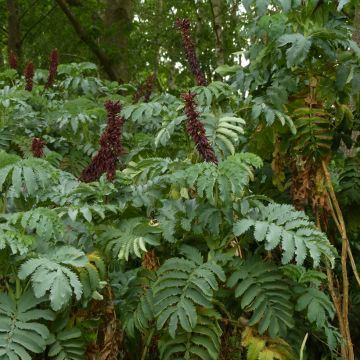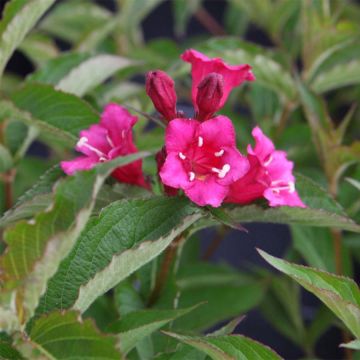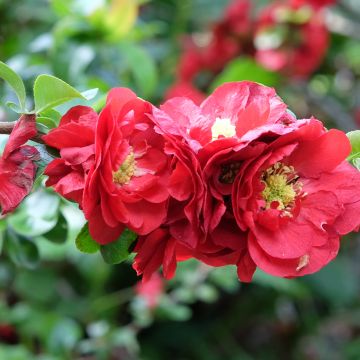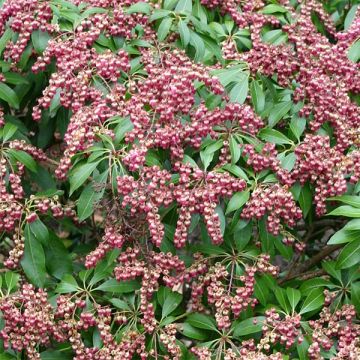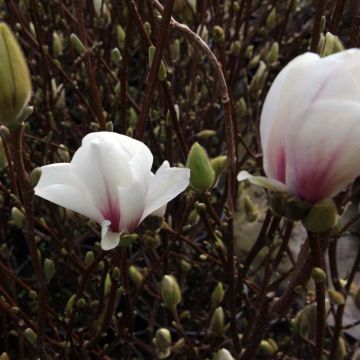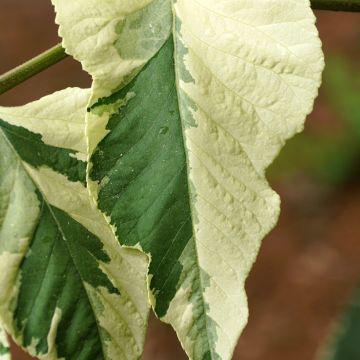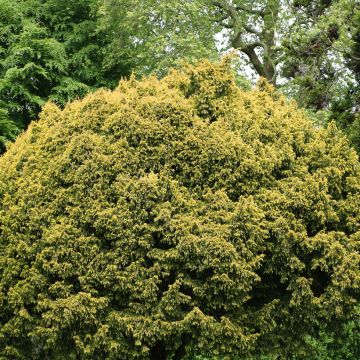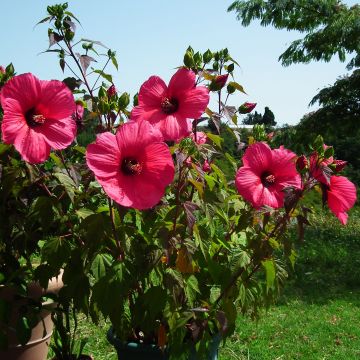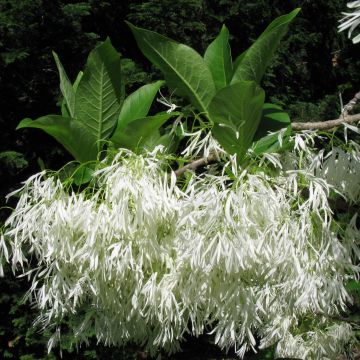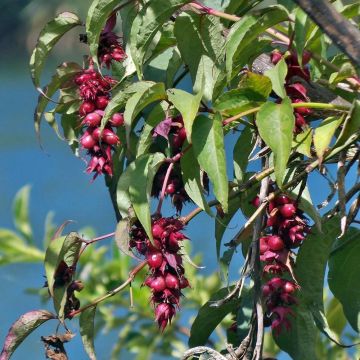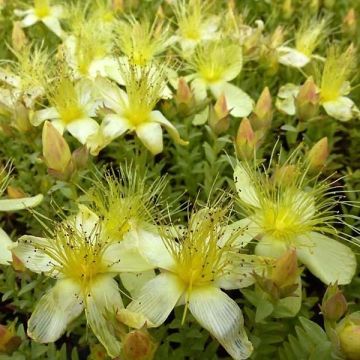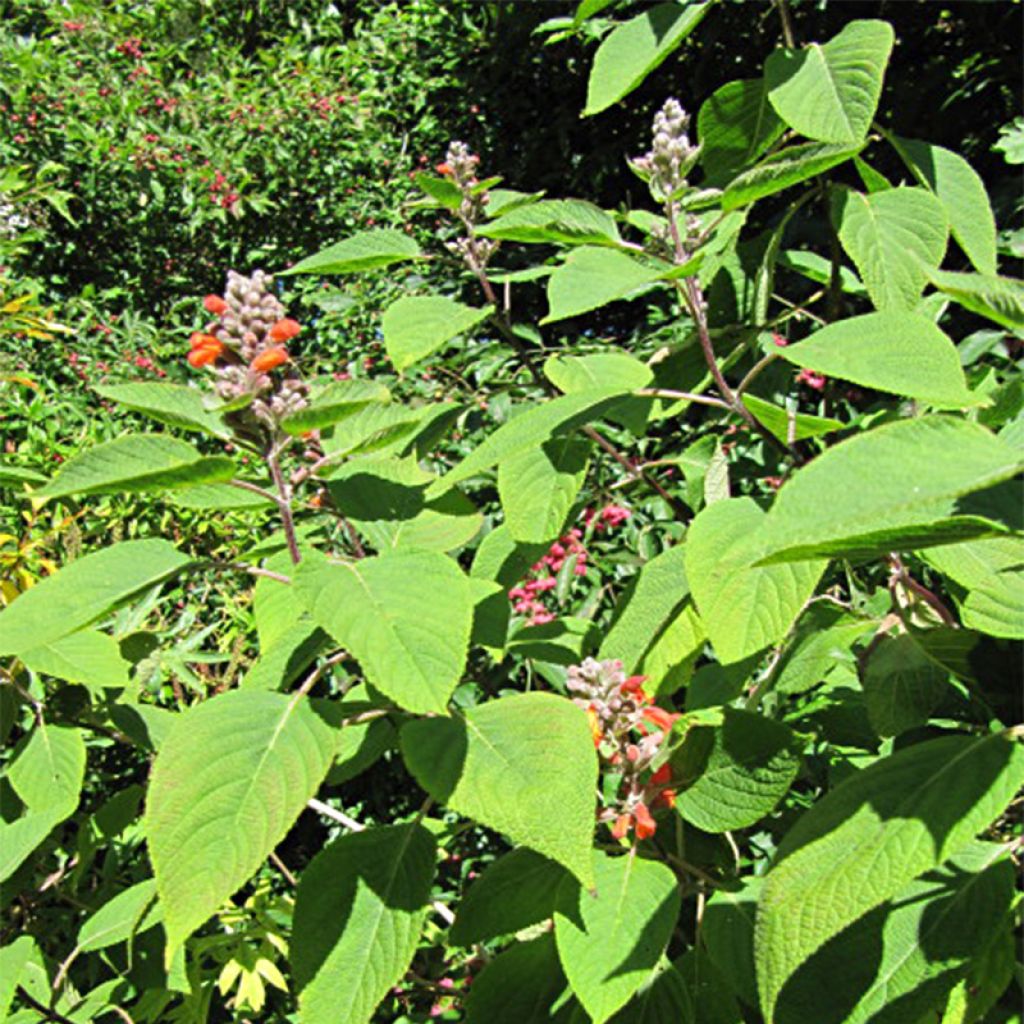

Colquhounia coccinea - Menthe arbustive de l'Himalaya


Colquhounia coccinea - Menthe arbustive de l'Himalaya
Colquhounia coccinea
Colquhounia coccinea
Himalayan Mint Shrub
Why not try an alternative variety in stock?
View all →This plant carries a 24 months recovery warranty
More information
We guarantee the quality of our plants for a full growing cycle, and will replace at our expense any plant that fails to recover under normal climatic and planting conditions.
From €5.90 for pickup delivery and €6.90 for home delivery
Express home delivery from €8.90.
Does this plant fit my garden?
Set up your Plantfit profile →
Description
Colquhounia coccinea, sometimes called Himalayan mint or Himalayan bush mint, is a highly ornamental aromatic plant, but rarely cultivated, perhaps due to its low hardiness, which still allows it to regrow from the stump after enduring -8°C (17.6°F). It forms a spreading and abundantly leafy bush, about 2 to 3m (7 to 10ft) in all directions. It comes alive in late summer and autumn with small tubular orange or red flowers, streaked with yellow at the throat. They create a superb contrast with the grey-green and velvety foliage. Evergreen in mild climates, it prefers well-drained soils, even dry in summer, and a warm and sheltered position, in full sun or partial shade.
Colquhounia coccinea is a bushy plant belonging to the Lamiaceae family, just like mint, thyme, and sage. It originates from subtropical regions of Asia, southwestern China, the Himalayas, down to Malaysia. While it can reach over 3m (10ft) in all directions in its native habitat, it remains more modest in size in our climates, around 1 to 2.5m (3 to 8ft). This bush, as wide as it is tall, is composed of quadrangular stems carrying pairs of large, opposite, aromatic leaves, with a velvety appearance, measuring 3 to 12cm (1 to 5in) long and 1 to 6cm (0.4 to 2in) wide, with finely toothed edges. When crushed, they release a fragrance reminiscent of pineapple. The flowering takes place from August to October, in the form of small tubular flowers with two lips, 2cm (1in) long. The flowers are brightly coloured, and arranged in spikes emerging from the axils of the leaves located at the ends of the branches. The corolla is red, sometimes pink, with a throat streaked with small yellow flames. The flowers are extremely popular with bees.
In nature, Himalayan mint grows in well-drained soils, under a warm temperate climate of subtropical type. It is above all a beautiful plant for the back of flower beds, forming a backdrop that attracts and holds attention in the garden. In mild climates, it can be paired with sturdy perennial plants or shrubs that complement its beautiful foliage, such as Buddleia officinalis, Salvia guaranitica, Gaura, large wormwood, or a spectacular and sculptural grass like Miscanthus sinensis 'Morning Light' or Cortaderia selloana 'Rosea'. Tall sedums (Sedum 'Matrona'), shrubby potentillas, and tall autumn asters (Aster turbinellus, Aster laevis, Kalimeris mongolica) will also create a charming tableau in autumn alongside it. If your garden is located in a borderline zone for its hardiness, you can try growing it against a south-facing wall. On the terrace, plant it in a very large pot, so you can store it indoors during severe frosts.
Report an error about the product description
Colquhounia coccinea in pictures




Plant habit
Flowering
Foliage
Botanical data
Colquhounia
coccinea
Lamiaceae
Himalayan Mint Shrub
Himalayas
Other Shrubs A to Z
Planting and care
Plant in the ground in spring, or in September in warm climates. Water for the first two years, to help the plant establish itself. It tolerates all sufficiently draining soils. The colder the winter, the more important soil drainage is. This plant requires a very sunny exposure and heat to develop rapidly and bloom abundantly. It is therefore best planted in front of a wall or hedge, or on a slope, facing south or west, allowing it to benefit from the reflection offered by a sun-heated wall.
Hardy in regions with mild winters, the Himalayan mint is evergreen until about -5°C (23°F). Below this threshold, it loses its leaves and sometimes part of its branches. However, the stump can withstand temperatures down to -10 to -12°C (14 to 10.4°F) in well-drained soil. In cold climates, cover the stump with a thick mulch. It is not uncommon for frost to damage some of the stems, or even all of them. In this case, cut back all the stems to the base; the plant will regrow from the stump in late spring. Be patient and wait for the buds to appear before determining at what level pruning should be done.
In mild climates, completely prune it back every year in spring to prevent the bush from becoming too tall and bare at the base; the foliage and branches will regrow. The vegetation and leaves will be even more beautiful, and the flowering more abundant.
You can also pinch out the young shoots by every 2 to 3 pairs of leaves during growth, to encourage the bush to branch out. This will create a more compact and more floriferous habit.
Planting period
Intended location
Care
-
, onOrder confirmed
Reply from on Promesse de fleurs
Summer-flowering shrubs
Haven't found what you were looking for?
Hardiness is the lowest winter temperature a plant can endure without suffering serious damage or even dying. However, hardiness is affected by location (a sheltered area, such as a patio), protection (winter cover) and soil type (hardiness is improved by well-drained soil).

Photo Sharing Terms & Conditions
In order to encourage gardeners to interact and share their experiences, Promesse de fleurs offers various media enabling content to be uploaded onto its Site - in particular via the ‘Photo sharing’ module.
The User agrees to refrain from:
- Posting any content that is illegal, prejudicial, insulting, racist, inciteful to hatred, revisionist, contrary to public decency, that infringes on privacy or on the privacy rights of third parties, in particular the publicity rights of persons and goods, intellectual property rights, or the right to privacy.
- Submitting content on behalf of a third party;
- Impersonate the identity of a third party and/or publish any personal information about a third party;
In general, the User undertakes to refrain from any unethical behaviour.
All Content (in particular text, comments, files, images, photos, videos, creative works, etc.), which may be subject to property or intellectual property rights, image or other private rights, shall remain the property of the User, subject to the limited rights granted by the terms of the licence granted by Promesse de fleurs as stated below. Users are at liberty to publish or not to publish such Content on the Site, notably via the ‘Photo Sharing’ facility, and accept that this Content shall be made public and freely accessible, notably on the Internet.
Users further acknowledge, undertake to have ,and guarantee that they hold all necessary rights and permissions to publish such material on the Site, in particular with regard to the legislation in force pertaining to any privacy, property, intellectual property, image, or contractual rights, or rights of any other nature. By publishing such Content on the Site, Users acknowledge accepting full liability as publishers of the Content within the meaning of the law, and grant Promesse de fleurs, free of charge, an inclusive, worldwide licence for the said Content for the entire duration of its publication, including all reproduction, representation, up/downloading, displaying, performing, transmission, and storage rights.
Users also grant permission for their name to be linked to the Content and accept that this link may not always be made available.
By engaging in posting material, Users consent to their Content becoming automatically accessible on the Internet, in particular on other sites and/or blogs and/or web pages of the Promesse de fleurs site, including in particular social pages and the Promesse de fleurs catalogue.
Users may secure the removal of entrusted content free of charge by issuing a simple request via our contact form.
The flowering period indicated on our website applies to countries and regions located in USDA zone 8 (France, the United Kingdom, Ireland, the Netherlands, etc.)
It will vary according to where you live:
- In zones 9 to 10 (Italy, Spain, Greece, etc.), flowering will occur about 2 to 4 weeks earlier.
- In zones 6 to 7 (Germany, Poland, Slovenia, and lower mountainous regions), flowering will be delayed by 2 to 3 weeks.
- In zone 5 (Central Europe, Scandinavia), blooming will be delayed by 3 to 5 weeks.
In temperate climates, pruning of spring-flowering shrubs (forsythia, spireas, etc.) should be done just after flowering.
Pruning of summer-flowering shrubs (Indian Lilac, Perovskia, etc.) can be done in winter or spring.
In cold regions as well as with frost-sensitive plants, avoid pruning too early when severe frosts may still occur.
The planting period indicated on our website applies to countries and regions located in USDA zone 8 (France, United Kingdom, Ireland, Netherlands).
It will vary according to where you live:
- In Mediterranean zones (Marseille, Madrid, Milan, etc.), autumn and winter are the best planting periods.
- In continental zones (Strasbourg, Munich, Vienna, etc.), delay planting by 2 to 3 weeks in spring and bring it forward by 2 to 4 weeks in autumn.
- In mountainous regions (the Alps, Pyrenees, Carpathians, etc.), it is best to plant in late spring (May-June) or late summer (August-September).
The harvesting period indicated on our website applies to countries and regions in USDA zone 8 (France, England, Ireland, the Netherlands).
In colder areas (Scandinavia, Poland, Austria...) fruit and vegetable harvests are likely to be delayed by 3-4 weeks.
In warmer areas (Italy, Spain, Greece, etc.), harvesting will probably take place earlier, depending on weather conditions.
The sowing periods indicated on our website apply to countries and regions within USDA Zone 8 (France, UK, Ireland, Netherlands).
In colder areas (Scandinavia, Poland, Austria...), delay any outdoor sowing by 3-4 weeks, or sow under glass.
In warmer climes (Italy, Spain, Greece, etc.), bring outdoor sowing forward by a few weeks.

































